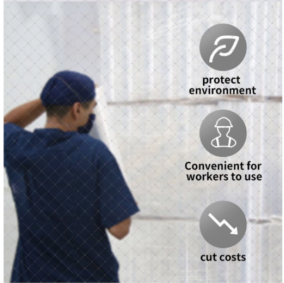Exploring Eco-Friendly Raw Materials for Biodegradable Carry Bags and Their Environmental Impact
The Importance of Biodegradable Carry Bag Raw Materials
In recent years, environmental concerns have accelerated the demand for sustainable products, prompting retailers and consumers alike to seek alternatives to traditional plastic bags. Biodegradable carry bags have emerged as a promising solution, not only mitigating pollution but also offering a viable means to handle waste responsibly. Central to this innovation is the raw material used in manufacturing these bags, which plays a critical role in ensuring their environmental-friendly attributes.
Biodegradable carry bags are designed to break down rapidly in the environment under the right conditions, reducing the accumulation of plastic waste that poses a severe threat to ecosystems. The key to their biodegradability lies in the selection of raw materials. Commonly used materials include corn starch, potato starch, PLA (polylactic acid), and PHA (polyhydroxyalkanoate), among others. These materials are derived from renewable resources and are designed to decompose into natural elements, thus minimizing their impact on the planet.
The Importance of Biodegradable Carry Bag Raw Materials
Another significant raw material is PLA, which is made from fermented plant starch, typically from corn. PLA has gained traction in the market due to its versatility and performance characteristics. It can be molded and processed similarly to conventional plastics, making it an attractive option for manufacturers transitioning to sustainable practices. However, to fully reap the benefits of PLA, it must be composted in industrial compost facilities that maintain the right temperature and humidity levels for decomposition, which underscores the importance of proper waste management infrastructure.
biodegradable carry bag raw material

PHA is also noteworthy for its unique qualities. Unlike PLA, PHA can be produced by microorganisms that feed on organic matter. This means it can be synthesized from waste streams, adding to its sustainability credentials. PHA is fully biodegradable and can break down in a variety of environments, including soil and marine settings, addressing major concerns about plastic pollution in oceans.
Despite the advantages of biodegradable materials, there are challenges to consider. The production of these materials often requires new agricultural practices that can compete with food production. Moreover, the disposal infrastructure for biodegradable materials is not yet fully developed in many regions, limiting the effectiveness of these solutions. Consumer education is also critical, as many people are unaware that biodegradable products should not be disposed of in regular trash but rather in composting facilities to achieve their environmental goals.
It is also essential for governments to implement policies that promote the use of biodegradable materials and enhance recycling programs. Financial incentives for companies to develop biodegradable alternatives and certification systems to ensure product claims are accurate can drive this transition.
In conclusion, the raw materials used in the production of biodegradable carry bags present a significant opportunity to reduce plastic waste and foster sustainable practices. By prioritizing renewable resources like starches and biopolymers, we can pave the way for a greener future. The success of biodegradable bags hinges not only on the innovation of these materials but also on collaboration among consumers, manufacturers, and governments to create an infrastructure that supports a sustainable lifecycle for these products. As awareness grows and technology improves, biodegradable carry bags can play a pivotal role in alleviating some of the environmental burdens posed by conventional plastic waste.
-
The Best Uses for Small Trash Bags in Daily LifeNewsJul.01,2025
-
Stylish Reusable Grocery Bags TrendsNewsJul.01,2025
-
Shipping Advantages of Using Bubble Envelopes BulkNewsJul.01,2025
-
How Compostable Mailing Bags Reduce Environmental ImpactNewsJul.01,2025
-
Environmentally - Friendly Bulk Poly MailersNewsJul.01,2025
-
Eco Friendly Custom Laminated Tote BagsNewsJul.01,2025
-
Have the freedom of customizing your custom mailers any way you want! Our dedicated packaging support will help deliver you the mailing experience you need to elevate your shipping experience to the next level! Start making a strong impression on your customers and stand out from your competitors! -
LIYA uses high quality raw materials which directly purchased from large enterprises domestic and overseas such as PetroChina, Sinopec, Sabic, Equate, ExxonMobil, Dow Chemical, Total, and Borouge, ensuring the price advantage and quality of the raw materials. -
LIYA uses high quality raw materials which directly purchased from large enterprises domestic and overseas such as PetroChina, Sinopec, Sabic, Equate, ExxonMobil, Dow Chemical, Total, and Borouge, ensuring the price advantage and quality of the raw materials.





